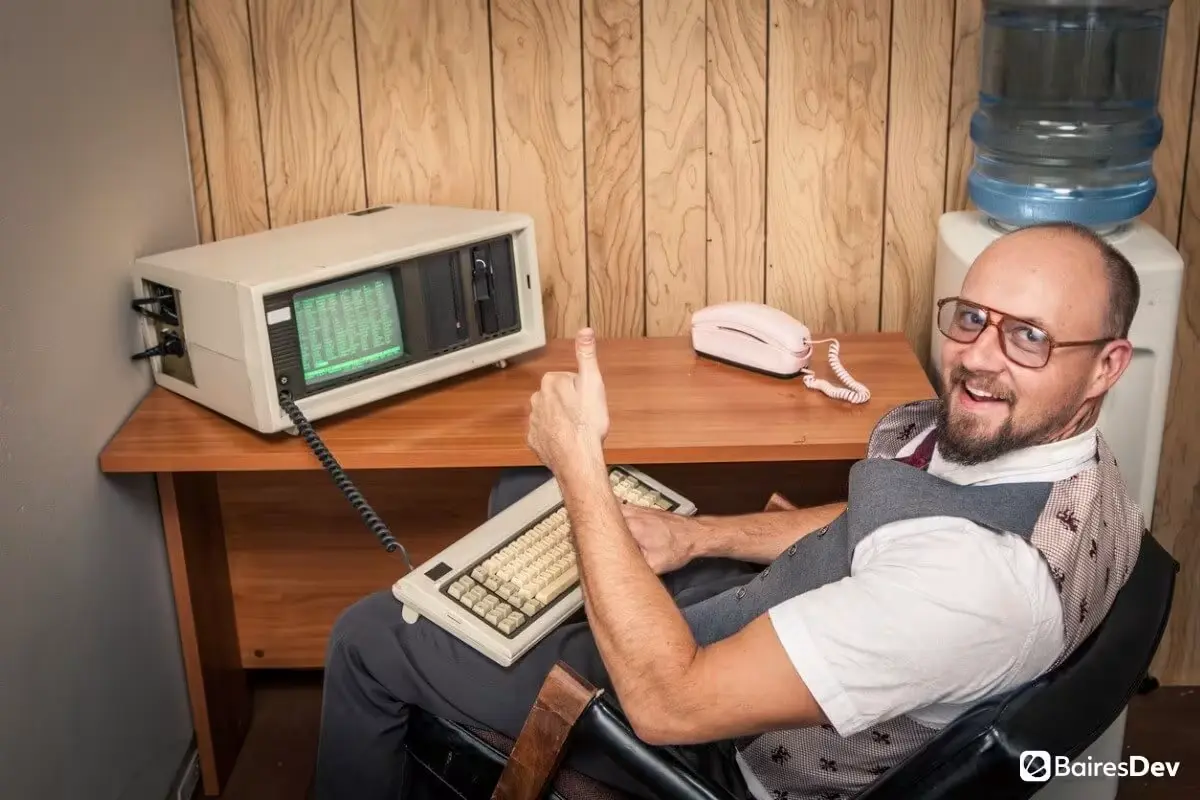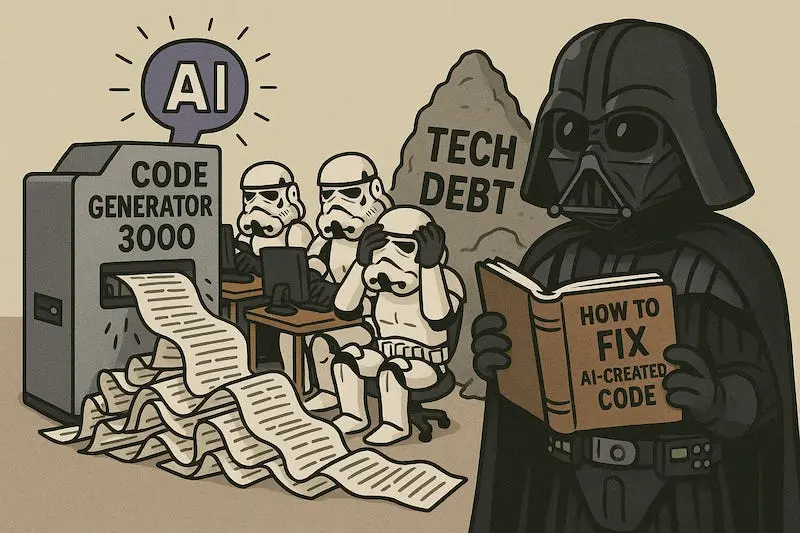
Legacy Modernization's Dirty Secret: Technical Debt Is the Least of Your Problems
The real blockers in legacy migration aren't outdated code, they're knowledge silos, risk-averse culture, and organizational inertia that technical teams can't fix alone.
You’ve mapped the dependencies, calculated the migration costs, and even convinced leadership that modernization is necessary. Then reality hits: the real blockers have nothing to do with technology. They’re the organizational debts that accumulate silently while everyone focuses on the technical ones.
According to a recent Ensono survey of 500 IT decision-makers ↗, nearly half of organizations found legacy maintenance costs exceeded expectations in the last year. But the deeper issue isn’t just financial, it’s the human and organizational factors that make modernization feel impossible.
The Myth of the “Clean Migration”
Most modernization efforts fail because they treat legacy systems as purely technical problems. The reality? Legacy systems embody decades of organizational decisions, compromises, and institutional knowledge.
One engineer described the challenge perfectly: “Legacy systems tend to accumulate ‘hidden rules’ and custom workflows that quietly keep the business running. The moment you start migrating, those gaps appear.” This isn’t about bad code, it’s about undocumented business logic that’s become essential to operations.
The banking industry provides a stark example. Modernizing core banking systems while maintaining operations has been compared to “renovating a large old house while still living in it.” You can’t just demolish everything and start over, the business must continue functioning throughout the process.
When Organizational Debt Trumps Technical Debt
Technical debt gets all the attention, but organizational debt is what truly derails migrations. Here are the real blockers engineers face:
Knowledge Silos: The Single Point of Failure
Old systems often rely on specialists who are retiring or leaving. As one modernization guide notes, “Legacy systems demand specialized knowledge, which is becoming rare and expensive.” When the last person who understands the COBOL payroll system retires, you’re not just losing code knowledge, you’re losing institutional memory about why certain business rules exist.
This creates a vicious cycle: the fewer people understand the system, the riskier any change becomes, which makes the organization even more hesitant to modernize.
Risk-Averse Culture: The Innovation Tax
Many organizations talk about innovation while maintaining systems that actively prevent it. One developer expressed the frustration perfectly: “We never get approval to refactor/modernize. There’s always some super important project which needs to be done yesterday, without enough time to do it properly.”
This creates what engineers call “the perpetual postponement” problem. Technical debt sprints get pushed back for “urgent” feature requests, ensuring the debt continues accumulating.
Broken Documentation and Hidden Dependencies
The most dangerous legacy systems aren’t the oldest, they’re the ones with the worst documentation. As modernization veterans note, “Every time we’ve been involved in a modernization project, the surprises came from dependencies no one had fully documented.”
These aren’t technical dependencies you can map with automated tools. They’re business process dependencies, the quiet understanding that System A needs to feed data to System B every Friday at 3 PM because that’s when the weekly reporting cycle begins.
The AI Modernization Paradox
The pressure to adopt AI is forcing many organizations to confront their legacy technical debt, but it’s creating a new organizational dilemma. As CIO Dive reports ↗, “The pace of change prompted by the rise of generative and agentic AI is driving enterprises to prioritize modernizing their IT systems.”
Yet this creates a catch-22: you need modern infrastructure to leverage AI, but you need AI capabilities to efficiently modernize your infrastructure. Organizations are stuck between maintaining systems that “just won’t scale” with modern demands and the massive investment required to replace them.
The 2-Minute Rule vs. Organizational Inertia
Some teams are finding success with micro-improvements rather than big-bang migrations. The “2-minute technical debt killer ↗” approach focuses on immediate, small fixes rather than waiting for dedicated cleanup sprints.
As one development team discovered, “Small fixes done immediately beat big cleanups done someday.” This approach works because it acknowledges organizational reality: you’re never going to get months of dedicated time for a complete rewrite.
But this requires cultural change. Teams must shift from seeing technical debt as an inevitable burden to treating quality improvements as part of daily workflow. The most successful organizations are those where “developers take pride in incremental improvements” rather than viewing cleanup work as punishment.
Breaking the Cycle: Strategies That Actually Work
Start with Knowledge Preservation
Before you touch a line of code, document the institutional knowledge. One team found that “doubling the discovery and testing phase saved headaches later.” This isn’t about technical discovery, it’s about understanding the business processes the system supports.
Embrace Incremental Modernization
The most successful migrations follow the “room-by-room renovation” approach. Instead of replacing everything at once, update legacy systems module by module. This reduces disruption and allows teams to test improvements step by step while the business continues operating.
Align Modernization with Business Goals
Technology should serve strategy, not the other way around. Modernization efforts fail when they’re treated as purely technical initiatives. Successful projects clearly define whether the objective is reducing costs, improving customer experiences, scaling operations, or enabling new digital services.
Address the Talent Gap Proactively
The skills required to maintain legacy systems are becoming scarce, making these projects high-priority modernization candidates. But you can’t just hire your way out of this problem. Successful organizations focus on knowledge transfer, creating documentation, and pairing legacy experts with modern developers.
The Future: AI-Driven Modernization or Organizational Evolution?
As AI tools become more sophisticated, they offer potential solutions to the knowledge silo problem. AI can help analyze legacy codebases, identify patterns, and even suggest modernization paths. But AI can’t fix organizational culture.
The most forward-thinking organizations are treating modernization as both a technical and cultural transformation. They’re creating environments where code quality becomes everyone’s daily responsibility rather than a periodic obligation.
As one industry observer noted about legacy systems, “The longer you can hold on to current systems and wait for next-gen AI-powered systems to emerge, the better off you will be.” But this waiting game only works if you’re simultaneously addressing the organizational debt that makes change difficult.
The Bottom Line: Modernization Is an Organizational Challenge
The hardest part of legacy modernization isn’t the technology, it’s changing the organizational patterns that created the legacy situation in the first place. Technical debt can be measured, planned for, and eventually paid down. Organizational debt is harder to quantify but ultimately more damaging.
Successful modernization requires acknowledging that you’re not just updating systems, you’re transforming how your organization thinks about technology, risk, and change. The teams that succeed are those that recognize technical debt is just the visible symptom of deeper organizational challenges.
The next time you’re planning a migration, ask yourself: Are we solving the technical problem, or are we addressing the organizational patterns that created it? The answer might determine whether your modernization effort becomes another legacy system in the making.



